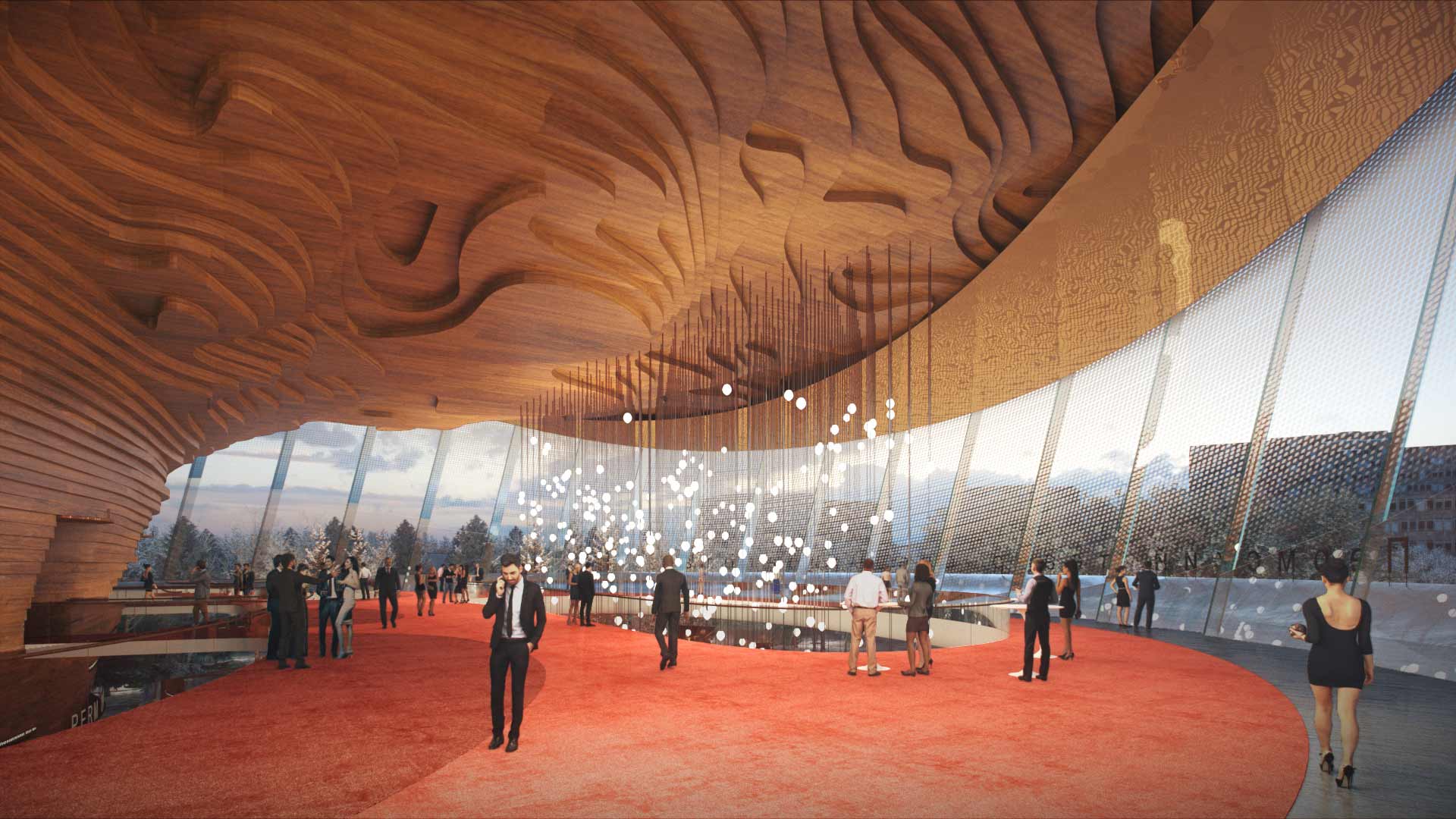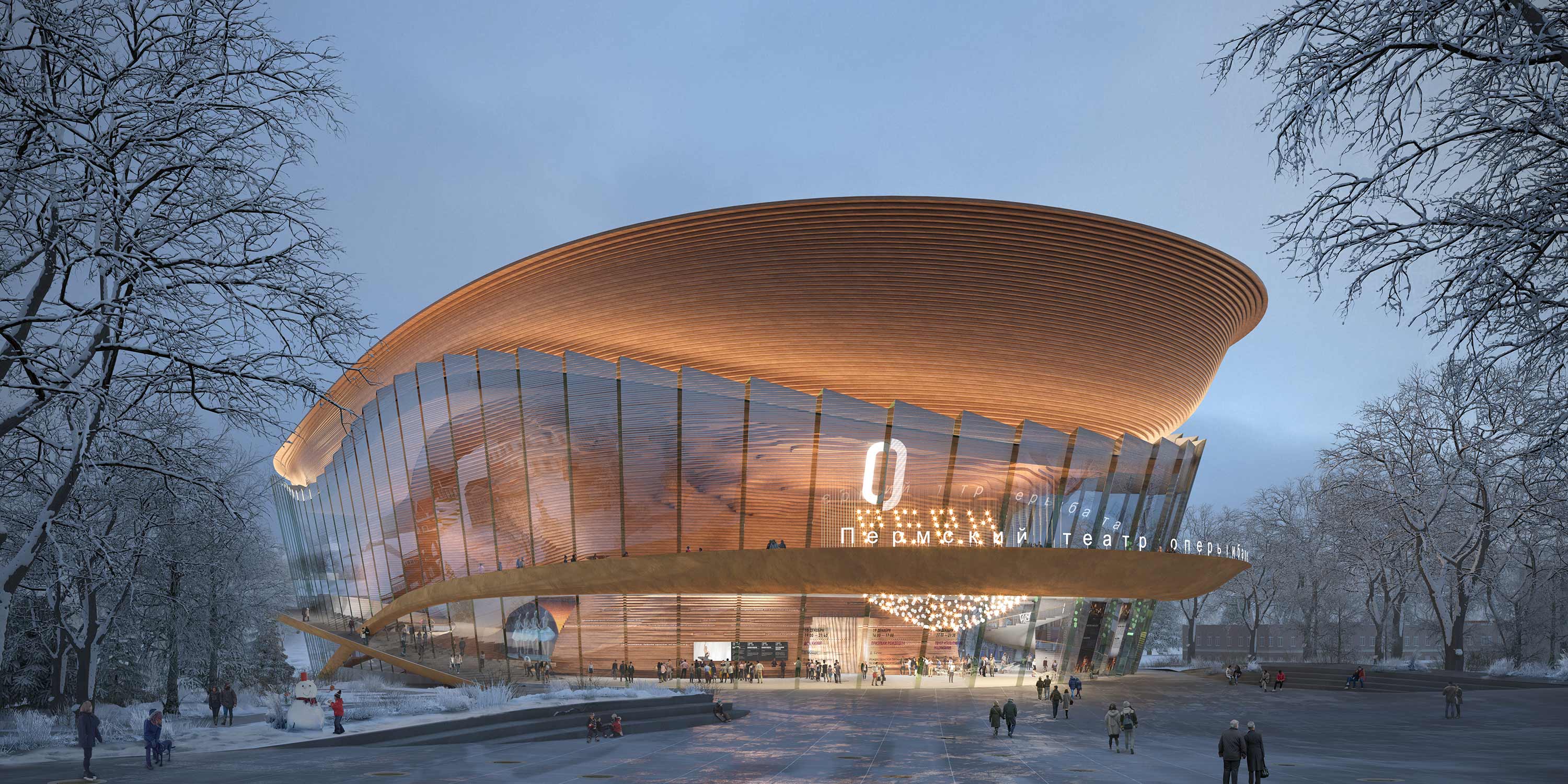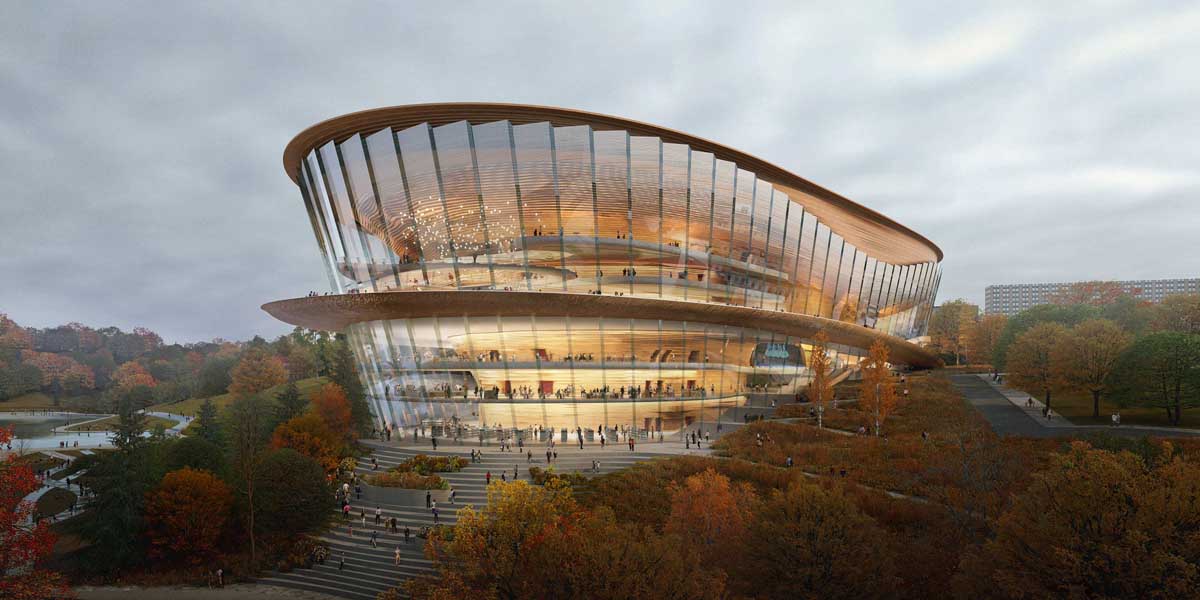The new Tchaikovsky Academic Opera and Ballet Theatre by American studio wHY Architecture is to be built on the bank of the Kama River in Perm, Russia, near the Ural mountains.
Perm is one of Russia’s famous ballet centres, after Moscow and St Petersburg. The existing theatre in the city is one of the country’s earliest, dating from 1870 and is home to one of Russia’s most popular ballet troupes. Russian composer Pyotr Ilyich Tchaikovsky was born in the region.
The City Council of Perm, gave its approval for the wHY-designed theatre as part of a major cultural revitalization initiative, led by the city’s mayor.

Located on a geological outcrop where the city meets the valley, the design will “reincorporate both the river and the landscape into the city’s cultural identity, creating a flowing, dynamic space that places art and nature at the centre of urban life”.
As a cultural landmark overlooking the city, the building has all the hallmarks of a monumental icon to the arts – however, wHY plans to explode the existing typology of the closed-off theatre structure, creating a building which is porous and open to all, with views of the city on all sides.
wHY’s design features a theatre with wrap-around glazing that will give views over the landscape, and allow the public to see in.

An undulating roof and curving glass facade is intended to invoke the flowing movement of the dancers who will perform there. Copper-coloured elements reference the ancient history of copper mining in the Kalargy region, a geologically rich area in the southern Urals of Russia.
A sweep of amphitheatre-style steps will lead up to the theatre designed by wHY Architecture’s Landscape Workshop. Inside the opera house, a series of ramps and walkways will lead to different theatres and out to pathways through the outdoor areas.
These formal elements of the theatre extend to the surrounding park, where a series of dancing paths and terraced landscape create a sense of continuity between the built and natural environment.

wHY Architecture was founded in 2004 by Thai architect Kulapat Yantrasast and has offices in New York and Los Angeles.
The studio has worked on several other arts projects, including the Speed Art Museum in Louisville, Kentucky, and an events pavilion overlooked by Edinburgh Castle in Scotland. wHy Architecture also designed an immersive tent for Los Angeles’ first Frieze Art Fair.
The studio is a multi-disciplinary team of 40 creative architects and designers based in Los Angeles and New York City, has five interdependent studios: Ideas, Objects, Buildings, Landscape, and Museums.

